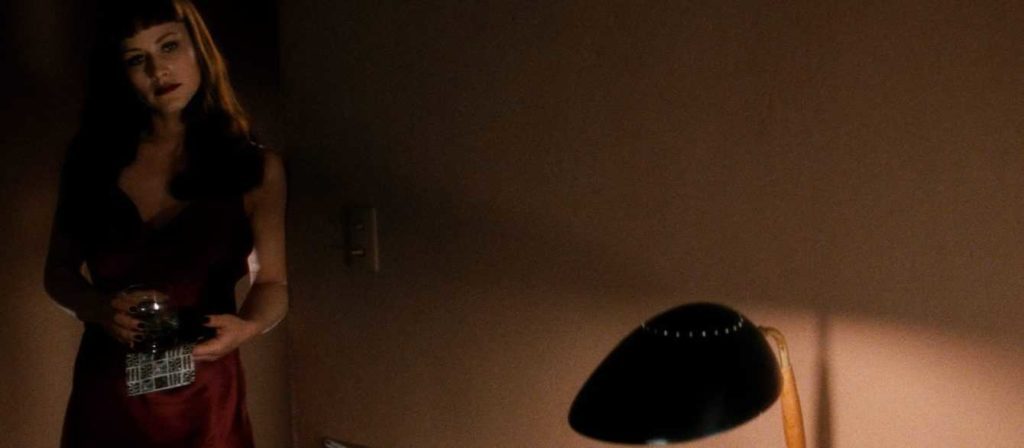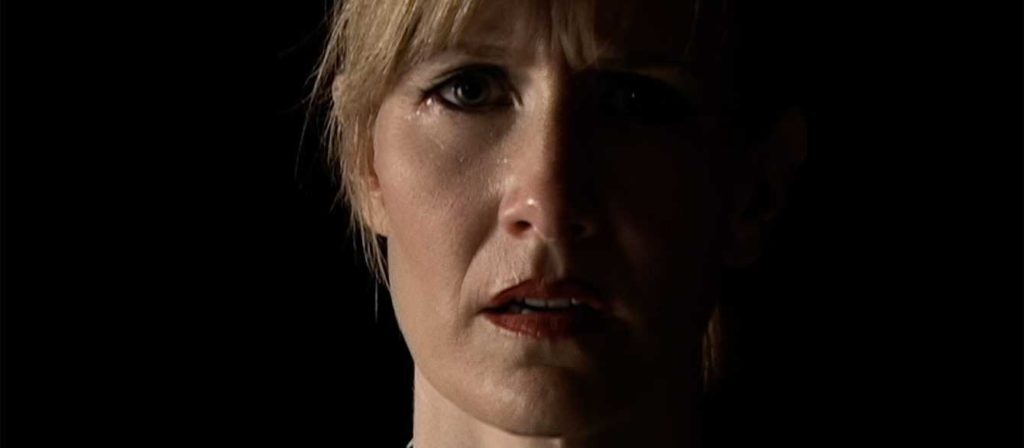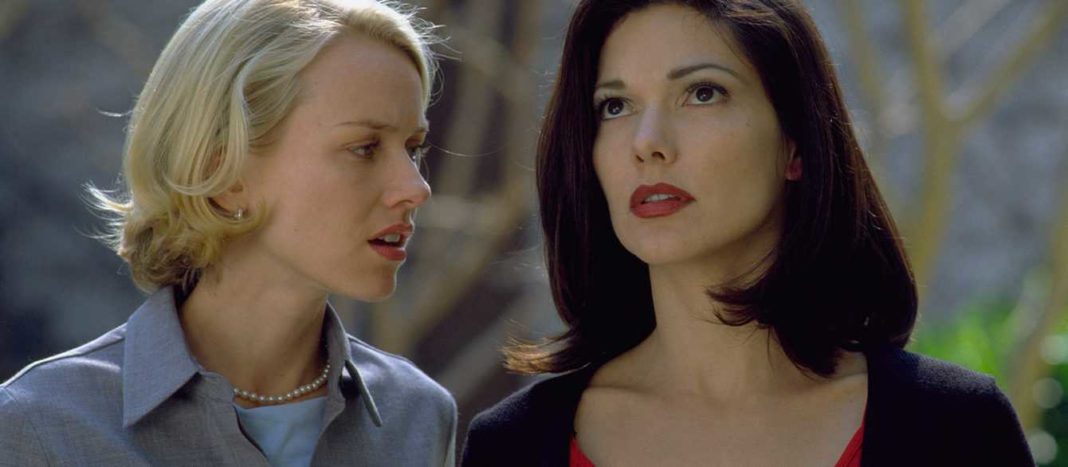Last Updated on July 5, 2022, 8:35 PM | Published: July 5, 2022
By now, I’ve made it pretty clear in this column that I’m a diehard, lifelong fan of the work of notoriously surrealist filmmaker David Lynch, the strange, impenetrable mind behind art-film landmarks like “Twin Peaks,” “Eraserhead,” and “Blue Velvet.”
His films are most often explorations of the heightened, illogical, and often campy world of dreams, and of the horrors and traumas of modern American life that spawn them, and there’s arguably no one better at moving so fluidly between the absurd and the terrifying.
So, of course, when I saw that the Oklahoma City Museum of Art’s Noble Theater was set to host a weekend-long retrospective of three of his most accomplished, defining, and yes, outright weird films, what they are billing as his “Los Angeles Trilogy,” I was ecstatic.
I knew I had to jump at the chance to break down not only these three remarkable works, 1997’s “Lost Highway,” 2001’s “Mulholland Drive,” and 2006’s “Inland Empire,” but also what makes them so consistently relevant and even urgent in 2022.
“Lost Highway” – 1997 – Showing Friday, July 8th at 7:00pm & Saturday, July 9th at 2:00pm
The 90s were an important and groundbreaking time for Lynch, providing him with the lauded crossover successes of “Wild at Heart” and the first, sensational season of cultural phenomenon “Twin Peaks,” and then the unfortunate financial failures of the show’s second season and its theatrical film, “Twin Peaks: Fire Walk with Me.”
By the latter part of the decade, he was clearly feeling angry and disenfranchised by the Hollywood system that he’d found himself trapped in, and was becoming increasingly obsessed with the city’s dark sides and barely contained evil energies.
“Lost Highway” burst to life as a way of dealing with both Lynch’s feelings about the city and the direction of American society, but also as a complete deconstruction of his own body of work.

Lynch has always had a predilection for 1950s-style Americana, with his primary colors, classic suits and dresses, and jazz – so much jazz – but “Lost Highway” either casts those elements away or openly destroys them.
The “story,” convoluted as it is, centers on Fred (Bill Pullman,) the ultimate “90s guy” with a sleek LA house and gorgeous, disinterested wife. He’s a jazz musician, but the jazz he plays is deranged, wild, and atonal, not the calming, mysterious music of “Twin Peaks.”
Fred receives a series of videotapes showing footage from outside his house, then inside his house. He meets a mysterious and chilling man at a party in what is, in my opinion and with no exaggeration, the creepiest scene in cinema history. When his wife goes missing, Fred is convicted of her murder, and, well, it gets much harder to explain from there.
Exploring themes of creeping surveillance, celebrity murder hysteria, a clueless justice system, and organized corruption and crime, all set to a blistering soundtrack of goth-metal, “Lost Highway” was a study in so many of the late-90’s issues and aesthetics that we see resurging in America right now.
“Mulholland Drive” – 2001 – Showing Saturday, July 9th at 5:00pm
Considered by many to be Lynch’s masterpiece, “Mulholland Drive” forgoes any pretense of Los Angeles as a simple backdrop or setting and instead rushes headlong into an examination of the attitudes, personalities, and misplaced dreams of the city itself.
Lynch largely refuses to entertain explanations or interpretations of his films, preferring to protect an individual and singular experience for each viewer, but it’s safe to say that “Mulholland Drive” is, at its heart, both a love letter to and a cautionary tale about the appeal and promise of “old Hollywood.”
Naïve, Midwestern Betty (Naomi Watts, feature photo) has just arrived in LA to be an actress, all wide-eyed and excited, and quickly crosses paths with a frightened amnesiac woman that we see survived a car wreck (and possibly something much more sinister) on the titular, infamous road.
What follows begins as a romp around town, with Betty living her Hollywood dream as an amateur detective, and slowly descends into a surreal, nightmarish collision of sex, jealousy, guilt, memory, and devastating fear, all hanging on the narrative fulcrum of one of the most beautiful and cryptic movie scenes ever filmed, the legendary “Club Silencio” sequence.
The obvious themes here, like chasing fame, maintaining image, and celebrity worship, are all just as relevant as ever, but the film also deals with some darker, quieter, and inarguably timely issues, such as the nefarious corporate influence in our art and even the difficulty and depression of hiding one’s true sexuality from the public.
It remains a work of staggering beauty and unexpected emotion, and might be the perfect place to start for newcomers to Lynch’s films.
“Inland Empire” – 2006 – Showing Saturday, July 9th at 8:00pm & Sunday, July 10th at 2:00pm
I’ve written about “Inland Empire” here before, even recently during Rodeo Cinema’s limited run just a couple of months ago, but its inclusion here alongside these other two films, framed together as Lynch’s own decade-long exploration of the nightmares beneath the surface of Los Angeles, makes it all the more special.
Any themes and interests touched on in the other two showcased films here, or indeed perhaps in any of Lynch’s other works, find new life and fresh blood in the sprawling, urban nightmare that is “Inland Empire.”
Though both “Lost Highway” and “Mulholland Drive” are famously obtuse and confounding, “Inland Empire” commits fully to an almost anti-narrative mentality not explored by Lynch to such an extent since “Eraserhead.”
Laura Dern stars (in what I will always contend is one of the most impressive performances in cinema) as an actress warned that her new starring role is cursed. What follows is three full hours of almost vignette-style scenes weaving in and out of one another, as characters change, scenarios and settings morph, and all lines between reality, fiction, and dreams dissolve into a singular and wholly unique experience.

But while the approach is surreal, and the plot possibly incomprehensible, the scenes themselves each function as a mirror held to another modern challenge of life in LA. There are scenes dealing with harassment, predatory producers, even homelessness, drug addiction, and an infinitely memorable scene describing a terrifying female medical condition at length.
The issues at hand in “Inland Empire” are the issues at the forefront of many lives today, even in our rapidly expanding OKC, and that’s before even getting to the humanoid rabbits walking around inside a nihilist sitcom scored by an unsettlingly detached laugh track.
These films may all seem like self-serving experiments in surrealism and strangeness for strangeness’ sake, but Lynch’s ability to use that presentation to explore the psychological effects of the increasingly modern, mechanical world is, I believe, unmatched.
It all has to be seen to be believed.
“David Lynch’s Los Angeles Trilogy: Lost Highway, Mulholland Drive, and Inland Empire” runs through this weekend at Oklahoma City Museum of Art’s Noble Theater. For showtimes, tickets, and more information, visit okcmoa.com.
Brett Fieldcamp has been covering arts, entertainment, news, housing, and culture in Oklahoma for nearly 15 years, writing for several local and state publications. He’s also a musician and songwriter and holds a certification as Specialist of Spirits from The Society of Wine Educators.











